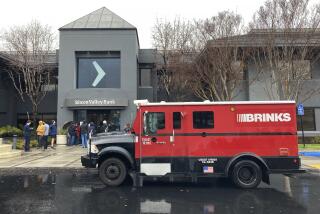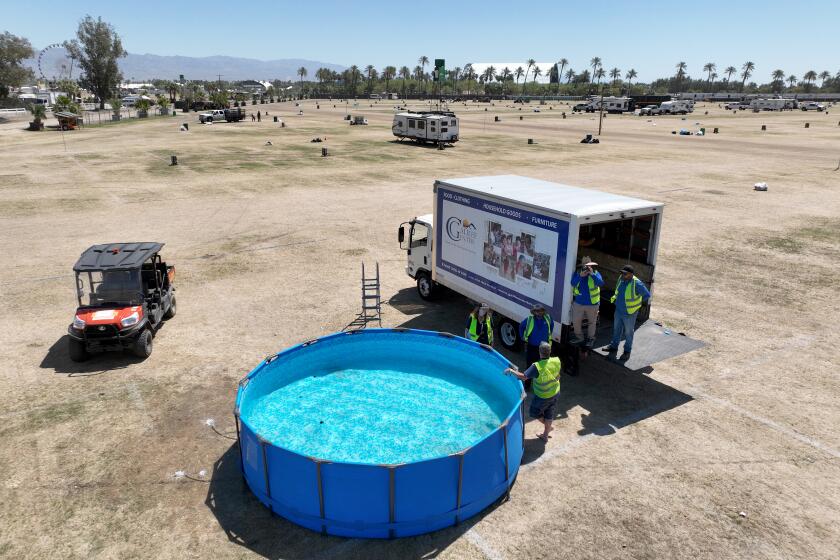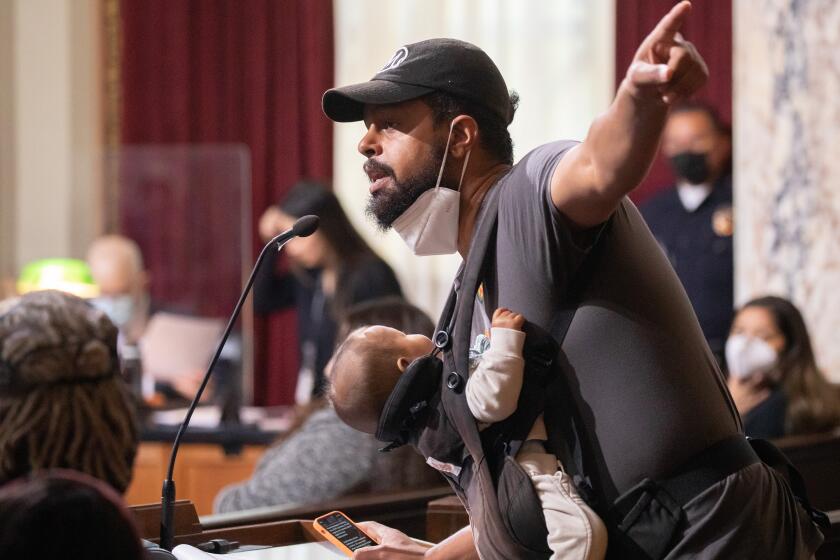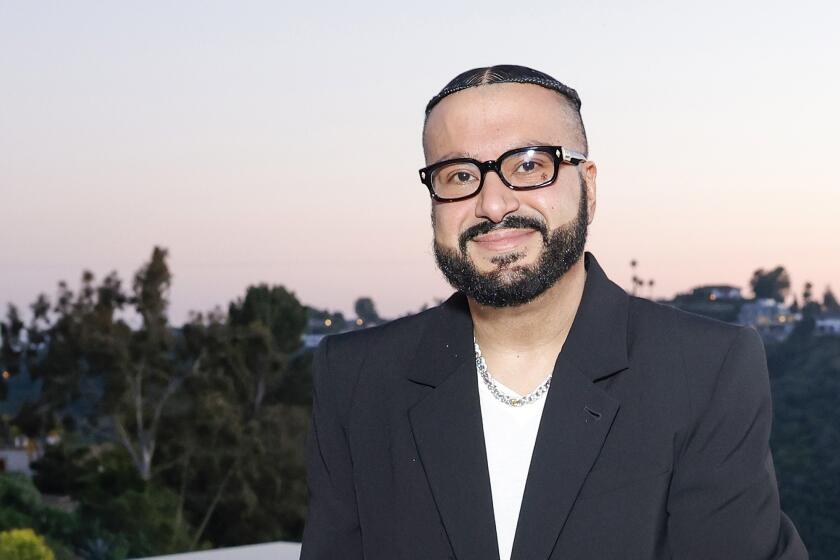Despite Problems, Valley Fair Boasts Its Champions : Finances: Though it may be old-fashioned and lose money, annual event helps generate state revenues.
Say what you will about the state-sponsored San Fernando Valley Fair, which opens for its 49th season on Thursday.
An anachronism? Fine. There is hardly any agriculture left in this Valley, the mother of all suburbs, where malls grow faster than weeds.
An orphan? Correct. It has no permanent fairgrounds, the only one of the state’s 54 regional fairs without a home. This will be the fourth year that it will be held at the Los Angeles Equestrian Center in Burbank.
A money loser? OK, that too. The fair owes creditors about $20,000 currently, way down from the $265,000 it owed four years ago.
So why bother to hold the seemingly cursed, four-day event--a bucolic oddity in the midst of pavement, palms and neon?
Because combined with the other fairs, the San Fernando Valley Fair generates revenue for the state through sales taxes and a special 5.5% concession fee charged to each of its approximately 100 vendors, officials say.
The state helps fund the fairs by taking 1% of the revenues generated statewide through horse races, part of a decades-old agreement between the state and the horse racing industry, according to Leon Vann of the California Department of Food and Agriculture. The San Fernando Valley Fair this year received about $140,000 from the state, about 28% of its budget of $500,000. The balance comes from concession and admission fees.
Though some fairs, such as San Fernando’s, periodically lose money, the state still sees a tenfold return on its investment, said Vann, chief engineer and director of horse racing and satellite wagering.
Just as important as the dollars the fair generates, said Vann and other organizers, is the way it helps preserve the Valley’s deep, if rapidly fading, agrarian roots. Pig races, livestock auctions and horticultural displays will be among this year’s attractions.
But the traditional will be joined by the technological, since part of what has helped the farm-oriented fair endure has been a shift in emphasis over the last five years from agriculture to art and science.
“The fair has more of an educational focus now,” said Dale Coons, the fair’s general manager for the last four years. “I don’t want to minimize the importance of the historical aspect, but that’s only a small portion of what the fair represents. It’s also about art . . . science . . . music . . . and participation, for everybody from the senior citizen who participates in the Golden Olympics to the child who draws a masterpiece on a sheet of paper.”
This year’s fair includes a high-tech “agriculture in space” exhibit sponsored by the National Aeronautics and Space Administration and aerospace companies including Rockwell International and Lockheed.
Visitors to the fair this year can also check out a Space Age exhibit that includes “remote sensing satellite imagery” developed by NASA. The technology allows farmers to examine their crops for disease, infestations and soil nutrient levels by simply reviewing photos from space rather than physically surveying acres upon acres of land.
“The faster he can spot the problem, the faster he can apply the appropriate remedy. That translates to a tremendous increase in potential crop yield and economic profit,” according to a fair brochure.
The fair also serves as a showcase for students enrolled in the dwindling number of high school programs in the Valley geared toward agriculture and animal sciences, such as Canoga Park High School’s agricultural science magnet.
“You have to have the commercial aspects of the fair to bring in money, but these days, the emphasis is really on teaching,” said Steve Pieprolungo, coordinator of the high school magnet, and also livestock superintendent at the fair.
About 30 students from Canoga Park will take animals from the high school’s working farm, including six steers, 15 sheep, nine pigs, five calves and several rabbits.
In addition to “moving forward with the times,” as Coons puts it, the fair’s management has worked to bring the event out of the red by trimming the budget from about $800,000 in 1991 to about $500,000. To do that, they cut the staff from about five full-time employees to two and eliminated expenses such as a coffee service, and Christmas gifts and greeting cards for the fair’s board of directors, who are appointed by the governor.
The cuts have helped shrink the fair’s debt, and Coons has vowed that this year, the $20,000 debt will be shed.
Another cost-saving measure, fair officials said, was the move to the equestrian center in 1992 from the Hansen Dam Recreation Area, where rent to the city had cost the fair $30,000 annually since 1988. Because there were no permanent buildings for the fair at Hansen, tents and other equipment had to be rented.
Coons said moving to the equestrian center allowed organizers to hold rodeo events for the first time in the fair’s history, a move that seems to have paid off in attendance. The rodeo events replace the traditional country music concert. This year’s fair features the Flying U Rodeo as its headline entertainment.
Though the fair had about 60,000 visitors in 1988, the number dropped as low as 35,000 in 1991. But last year, buoyed by the rodeo attraction, attendance rebounded to about 50,000, and this year, Coons projects another modest improvement.
In addition to the rodeo events, highlights this year include sheep herding demonstrations conducted with trained stock dogs, competitions in Western dance, horseback riding, karaoke, gourmet cooking, as well as a petting zoo, arts and crafts, live music, carnival rides and games.
(BEGIN TEXT OF INFOBOX / INFOGRAPHIC)
Next Step
* The San Fernando Valley Fair opens Thursday at 2 p.m. and runs through Sunday at the Los Angeles Equestrian Center, 480 Riverside Drive, Burbank. Admission is $5 for adults; children 11 or younger will be admitted free.
More to Read
Start your day right
Sign up for Essential California for news, features and recommendations from the L.A. Times and beyond in your inbox six days a week.
You may occasionally receive promotional content from the Los Angeles Times.






